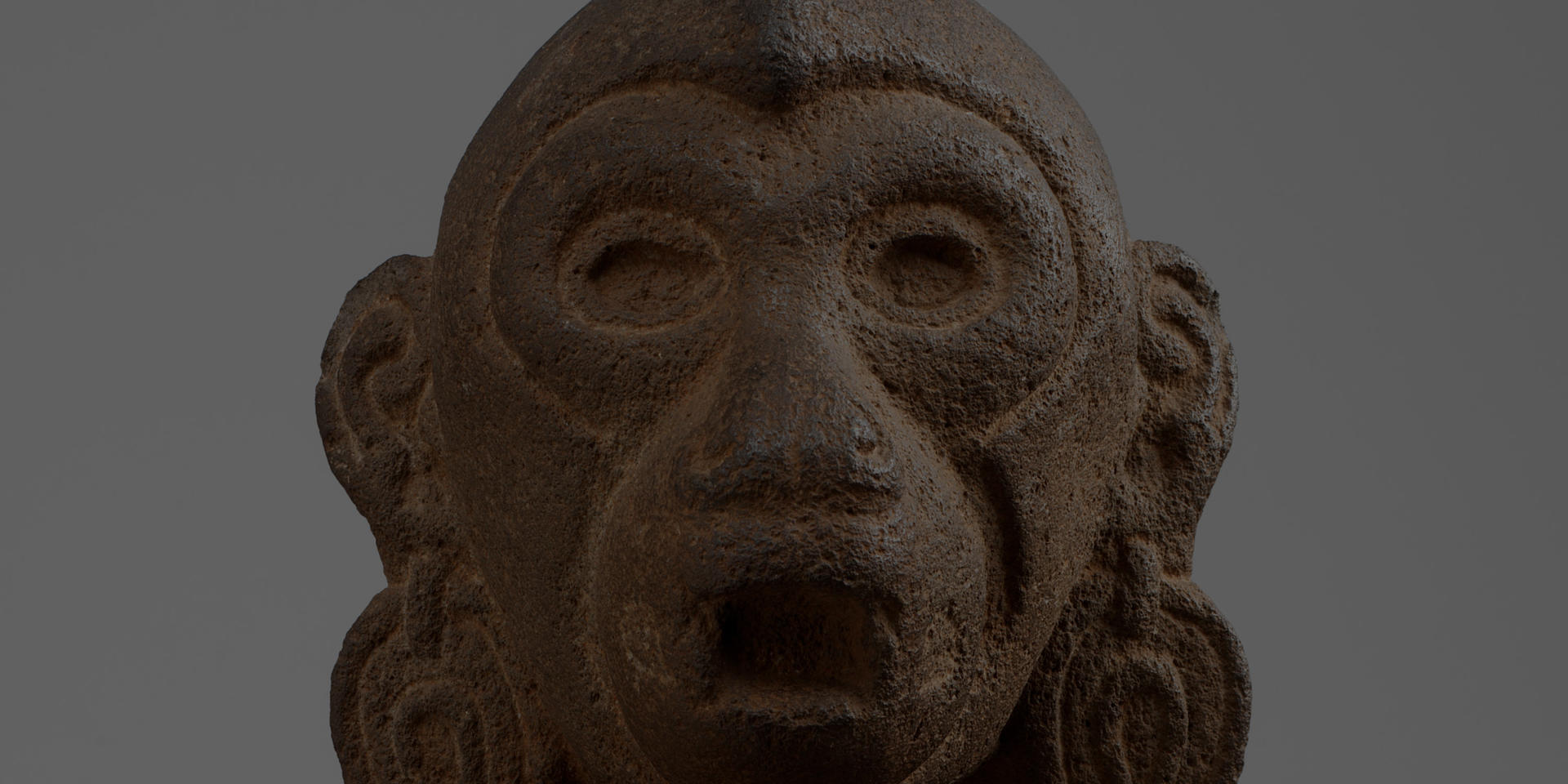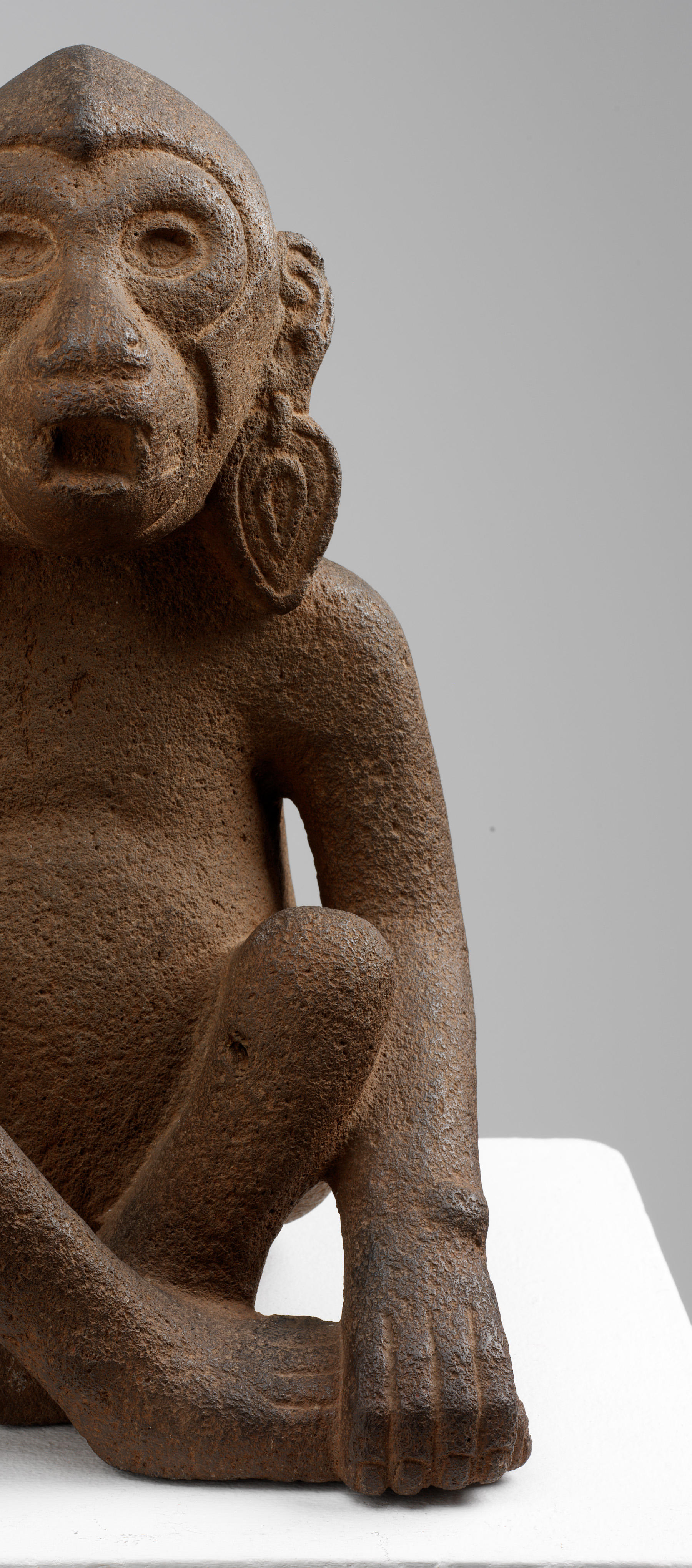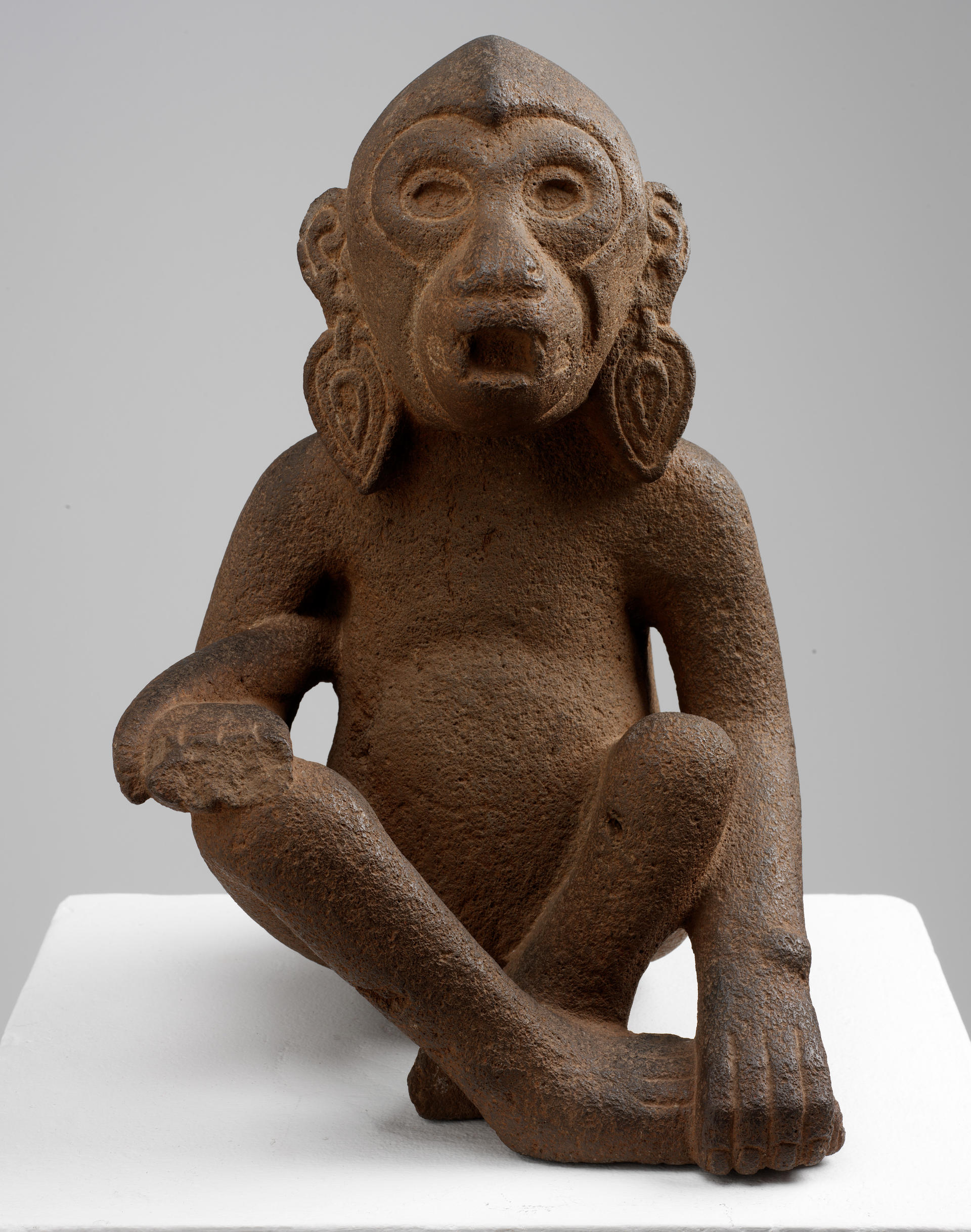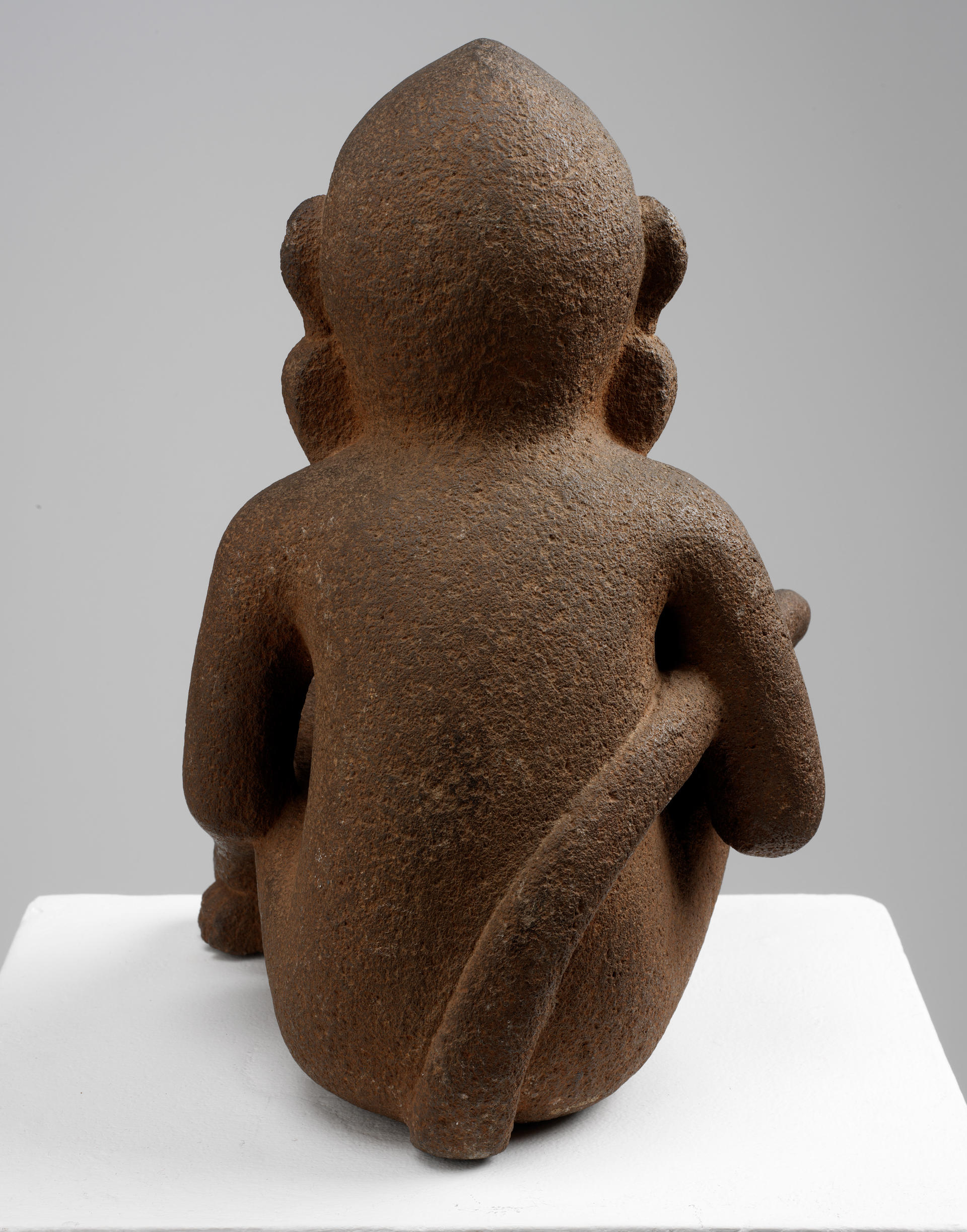Image

DOUBLE TAKE
Staring at the
Aztec Spider Monkey
Josiah Luis Alderete / Stephen Parman
Aztec
Spider Monkey, 1200–1521
Volcanic stone
35.6 x 26.7 x 24.8 cm. (14 x 10 1/2 x 9
3/4 in.)
Mary B. Jackson Fund 43.54
Josiah Luis Alderete
—
Primero estrellas
y despues piedras . . .
y somewhere along the way an ozomatli appeared
with elongated graceful fingers
capable of grasping the pedasitos of the universe
that slip right past us
his elegante curved colita
so much more evolved than any of our pinche robot dog technology
space helmet on
communicators dangling from either ear translating mundos?
oye ozomatli which side of the timeline are you on?
because—hijole—from over here
it looks like you go on forever
your texcalli ojos have seen nada, have seen everything
your texcalli bocita has been open this whole time
speaking in an intergalactic silencio
telling leyendas y cuentos
to whatever parts of this quinto sol were listening
the evolved monos that we are
always forget what you’ve told us
so por favorcito ozomatli tell us one more time
Image

Image

convince us of our huesos
convince us of our antepassados teeth
convince us of our futuras
tell us how our flesh will become the cracks in la tierra
tell us about the lagrimas of las estrellas
the cicatrix’s of la luna
the whispers in the tails of the comets that cross el cielo
tell us otra vez ozomatli
you know we are meant to forget
you know we are meant to be forgotten
somewhere inside you is the inside of obsidian
somewhere inside you is old fire
and constellations that we will never see
ozomatli
you inhale this existencia
you exhale stardust
you are stone still
waiting for us to fade
so that you can return to where you began . . .
primero estrellas
y despues piedras.
Stephen Parman
—
Probably andesite. Aphanitic, no apparent phenocrysts. Vesicular. Slightly oxidized surface.
The monkey sits. Perhaps it is tired. It is quite old. Far older than the hand that shaped it. Far older than people. Older even than the planet. And it is a restless monkey. Always in motion, always changing, always transforming.
It was born billions of years ago, inside of stars. Long before Earth existed. Primordial hydrogen and helium mashed by gravity and heat. An epic mosh pit forming larger, more interesting elements. Silicon. Oxygen. Carbon. Magnesium. Elements that can make planets, and humans, and volcanic rock. This is the first of the monkey’s transformations.
For millions of years, the atoms resided in the bellies of the stars. But all things die. And the stars died in massive, messy explosions (supernovas), flinging the monkey atoms into the expanse of the Universe. Some were accelerated to significant fractions of the speed of light. Not easy to do. No wonder the monkey is tired!
Then, for millions more years, or maybe billions, the atoms drifted through space. No purpose. No direction. A teenage monkey. Until one day the atoms felt the gravitational tug of our nascent sun and so began their transformation from dust to planet. They circled the growing sun, coagulating into larger bits, finally making mini-planets that smashed into each other with titanic force. The atoms of our monkey were incorporated into the proto-Earth through strenuous ingestion, heated from the coldness of space to temperatures that not just melted rock but vaporized it.
Image

Image

For the last four and a half billion years, the monkey swirled into and out of our planet. Erupted on the surface, shoved back into the interior by the motions we call plate tectonics. Likely, the monkey had incarnations as river sediments, the hearts of mountains, muck on the bottom of the ocean, parts of the bodies of plants and animals. Finally, below what we now call Mexico, magma ascended through kilometers of rock to erupt as a glowing red lava flow that solidified into this gray volcanic rock. A mixture of small crystals and natural glass. Pock-marked by gas bubbles frozen in place as it cooled. The last transformation in a long, long line of transformations. Violent, but not the most violent. Old, but not the oldest.
And then, pretty recently, someone picked the rock up and transformed this material once again. For the first time, this was a conscious hand. A creative hand. A chisel, not gravity or heat. From the unconscious atoms, the monkey was summoned.
Is this latest incarnation a blip? The only one that really matters? Will the atoms stay a monkey forever after, or will they rejoin the “natural” world at some point, resuming the endless line of thoughtless transformation? Unclear. More data is needed. Humans are such a recent phenomenon. They could amount to something. Or they could just be a blip themselves. Come back in a few million years and see how things are going.
The inscrutable atomic monkey sits before us. It is old. It rests, stares ahead, rubs its sore foot, and waits for the next step of its journey.
Cite this article as
Chicago Style
MLA Style
Shareable Link
Copy this page's URL to your clipboard.

